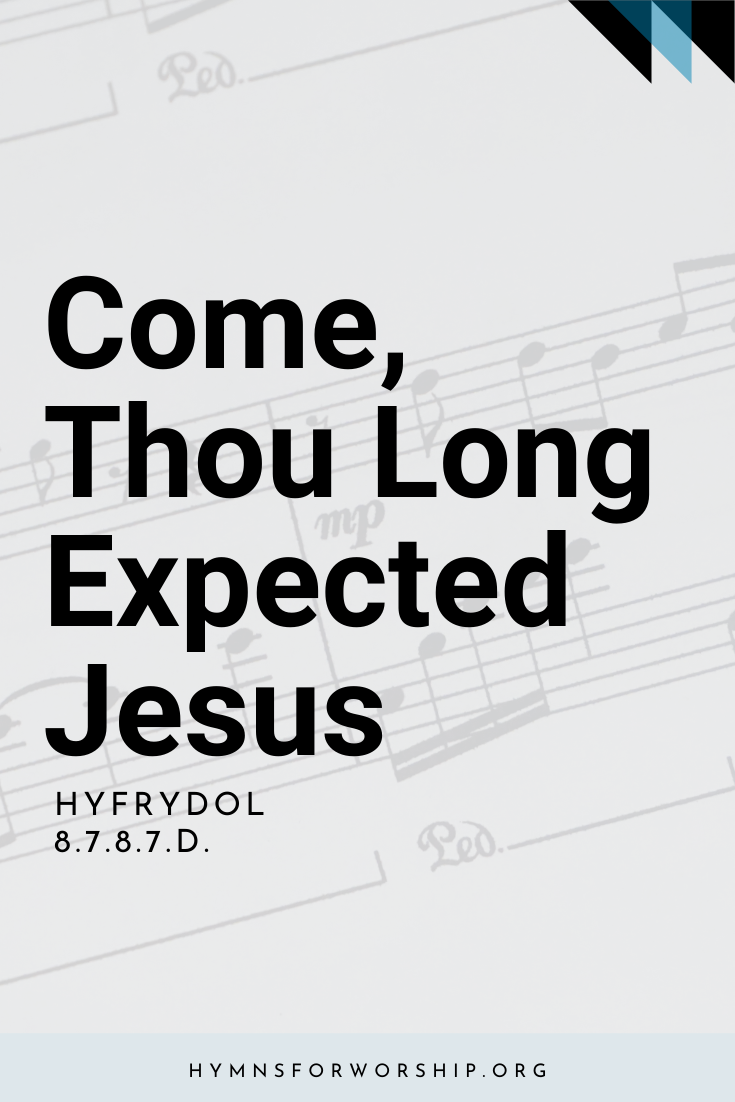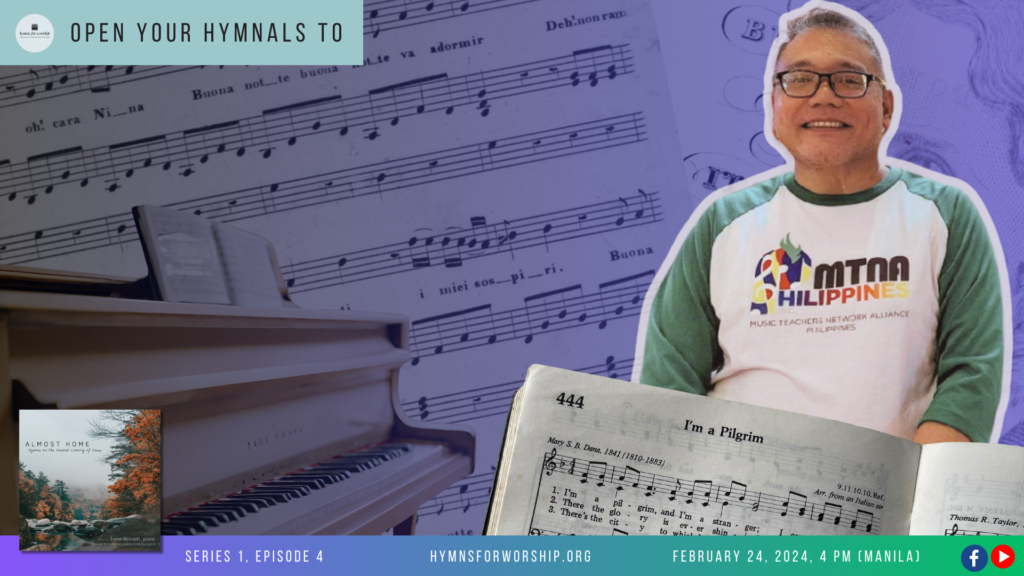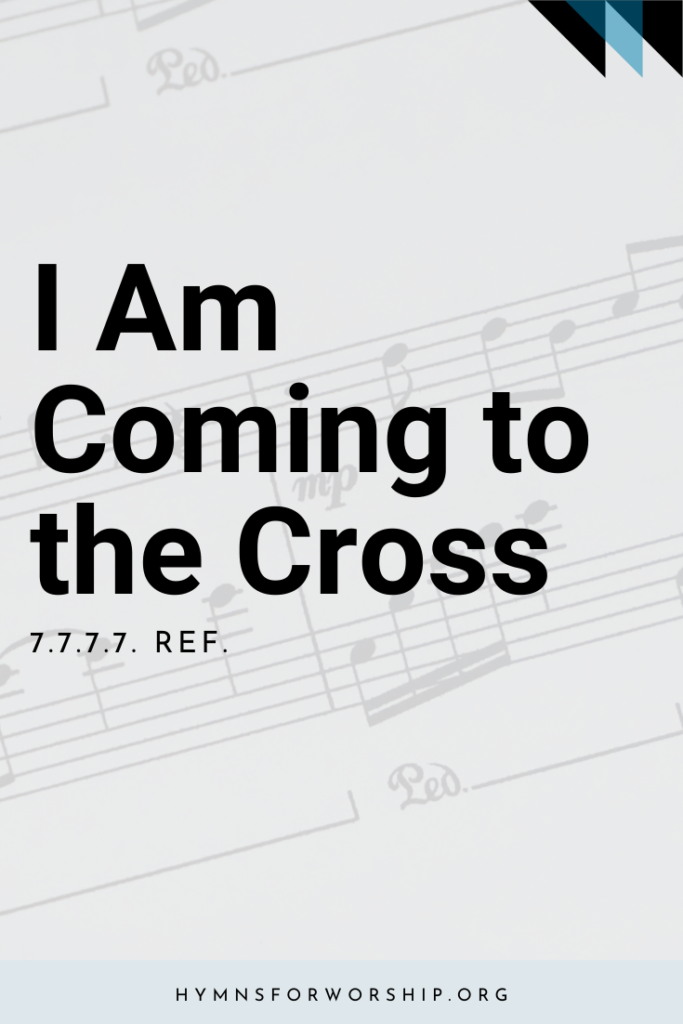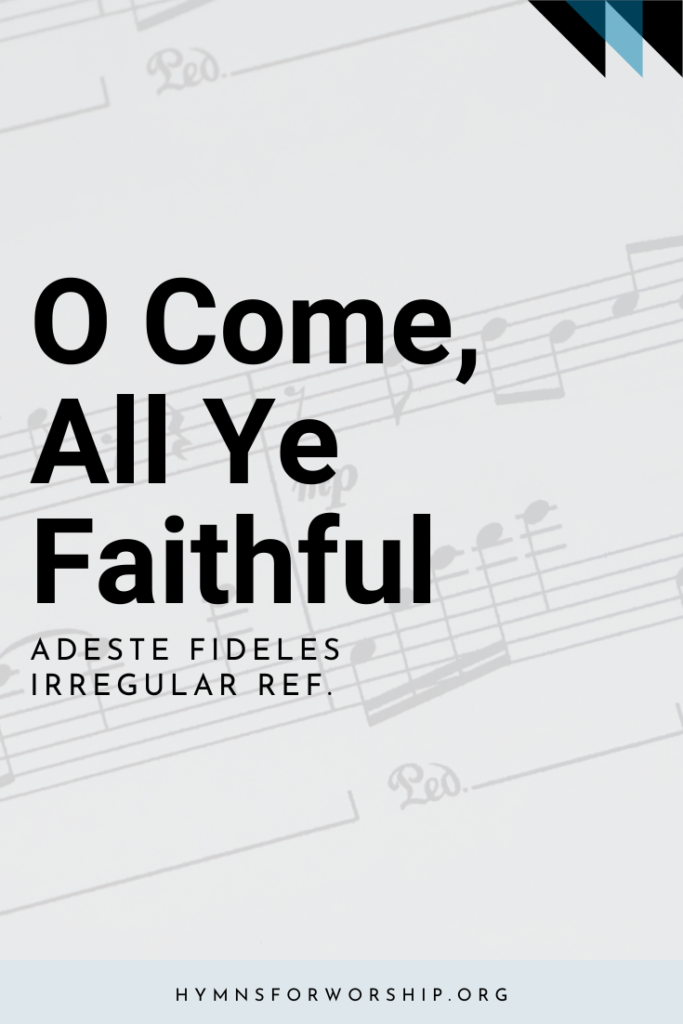JESUS CHRIST >> SECOND ADVENT
SDAH 204
Come, thou long expected Jesus!
born to set thy people free;
from our fears and sins release us,
let us find our rest in thee.


Text
1
Come, thou long expected Jesus!
born to set thy people free;
from our fears and sins release us,
let us find our rest in thee.
Israel’s strength and consolation,
hope of all the earth thou art;
dear desire of every nation,
joy of every longing heart.
2
Born thy people to deliver,
born a child and yet a King,
born to reign in us forever,
now thy gracious kingdom bring.
By thine own eternal spirit
rule in all our hearts alone;
by thine all sufficient merit,
raise us to thy glorious throne.

Hymn Info
Biblical Reference
(a) Luke 3:15; John 8:32; Luke 2:25; 1 Tim 1:1; Hag 2:7 (b) Matt 2:8, 2; 2 Pet 2:9; 1 Cor 3:16
Author
Charles Wesley (1707-1788)
Year Published
1744
Copyright
Music from the English Hymnal by permission of Oxford University Press.
Hymn Tune
HYFRYDOL
Metrical Number
8.7.8.7.D.
Composer
Rowland H. Prichard (1811-1887)
Arranged
Ralph Vaughan Williams, 1951 (1872-1958)
Year Composed
c. 1830
Alternate Tune and Harmony
STUTTGART SDAH 659, Alt. harmony SDAH 167

Get the hymn sheet in other keys here
Recommended Reading
“Come, Thou Long Expected Jesus” was the first of a number of Wesley’s hymns that became known as the “Festival hymns”. These “Festival hymns” were published outside of Methodism by German, John Frederick Lampe in 1746.
Moreover, the hymn was really made popular across Christian denominations via popular Baptist preacher, Charles Spurgeon.
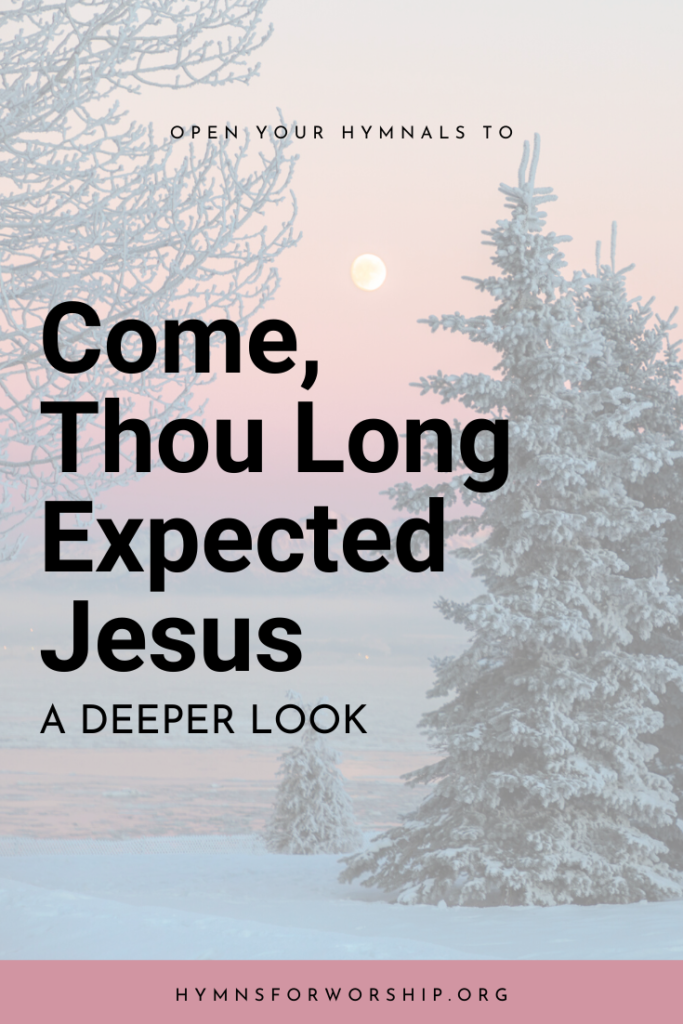
Charles was the other Wesley. Alongside his brother John who was considered the main guy behind the founding of Methodism, it was Charles’ hymns that pushed through the envelope of being “just another religion.” His lasting and well-known hymns have captivated Christians all around the world. Through his poetic lines, we are able to sing many hymns with such deep theology.
It was said that he wrote 8,989 hymns. That’s 10 lines of poetry every single day for 50 years. And we are privileged to have sung some of those hymns. Tell me, don’t these hymns ring a bell for you?

Notes
Make each hymn more meaningful with these helpful tools: Short, ready-to-use hymn introductions for church bulletins, multiple ways to introduce a hymn based on your worship theme and in-depth history and insights to enrich your song service.
Only as God “comes down” to earth can He redeem us. He came down to redeem Israel from slavery in Egypt and appeared to Moses in the form of an angel. He became flesh born in a manger to save His people from their sins. Now He comes to dwell in our hearts as a Holy flame that quickens us to obey His will. (Lesson 7, 2nd Quarter 2021 – Monday, The Pattern of Salvation, 5/10/2021)
The birth of Jesus in Bethlehem, his life here on earth, death on the cross, resurrection from the grave, and ascension to minister in the heavenly sanctuary were all prophesied in the scriptures. The long expected Christ that will come is Jesus. He is the desire of every nation and joy of every longing heart. (Lesson 12, 2nd Quarter 2021 – Sin, Sacrifice, and Acceptance, 6/7/2021)

